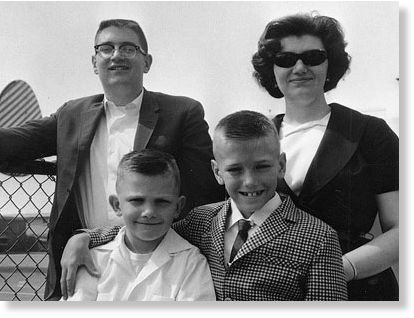
© Flickr Steve Nordby
According to Chris Porter, manager at John Burns Real Estate Consulting, back in the 1960s, there were 23.5 million households made up of parents and children. In 2010, that number was 23.6 million.
In that same 50 year span, according to the
Census Bureau, the total number of households rose from 53 million to 116.7 million.
The total number of households has more than doubled - but the number of households made up of parents and children hasn't changed in 50 years.
Traditional family units aren't the majority of our households anymore. What is driving this huge change in household demographics?
According to the John Burns group, the answer is a combination of evolving social norms and the lingering effects of the Great Recession.
In 1960, married couples comprised a full 75 percent of total American households. By last year, that number had fallen precipitously to 48 percent, or less than half. The decrease corresponds to a similar rise in non-family households: single people, roommates and unmarried, co-habitating couples.
"People are increasingly choosing to not get married or to delay their marriages. If you look at the Census over the last couple decades, people are delaying unions much longer," explains Porter. This new relationship paradigm is more socially acceptable in the 21st century than it was 50 years ago, which partially accounts for the wildly divergent household makeup.
But we can't let the economy off the hook either. "We're also seeing a number of young people still living at home with mom and dad because of the state of the economy. There are 1.5 million more young adults between the ages 25 and 34 living at home with their parents than there was 10 years ago," Porter adds.
So what do these demographic numbers mean for housing trends in the near and long range? Porter predicts that "we will see family households grow at a slow rate, about 1.3 percent over the next 10 years. We have become more bearish on the job market."
Continually sluggish growth in employment numbers virtually assures that young college grads will stay with their parents until they find work, and
stagnant wages accompanied by rising fuel, housing and food costs almost guarantee that roommates will have to live together longer.
As a result, in conjunction with a credit crunch and a retrenching of consumer confidence, Porter believes the next 10 years will bear witness to "a lot of rent before owning situations. We'll see a surge in apartment demand over the next several years."
Some economists believe that it won't just be apartment demand that will surge. They're pointing to a boatload of pent-up demand that they believe means another wild swing upwards for real estate. They're just not sure when demand will shift into high gear.
Either way, the changing demographics signal a shift away from traditional family homeowners and should signal an opportunity for developers and designers to showcase what they can offer in what has essentially become the new household normal.
How much of the profound shift in household demographics do you think can be attributed to the evolution of society versus simple economics?
Source: CBS Money Watch

There just isnt much reason to stay together.Or maybe there is other societal problems going on.I